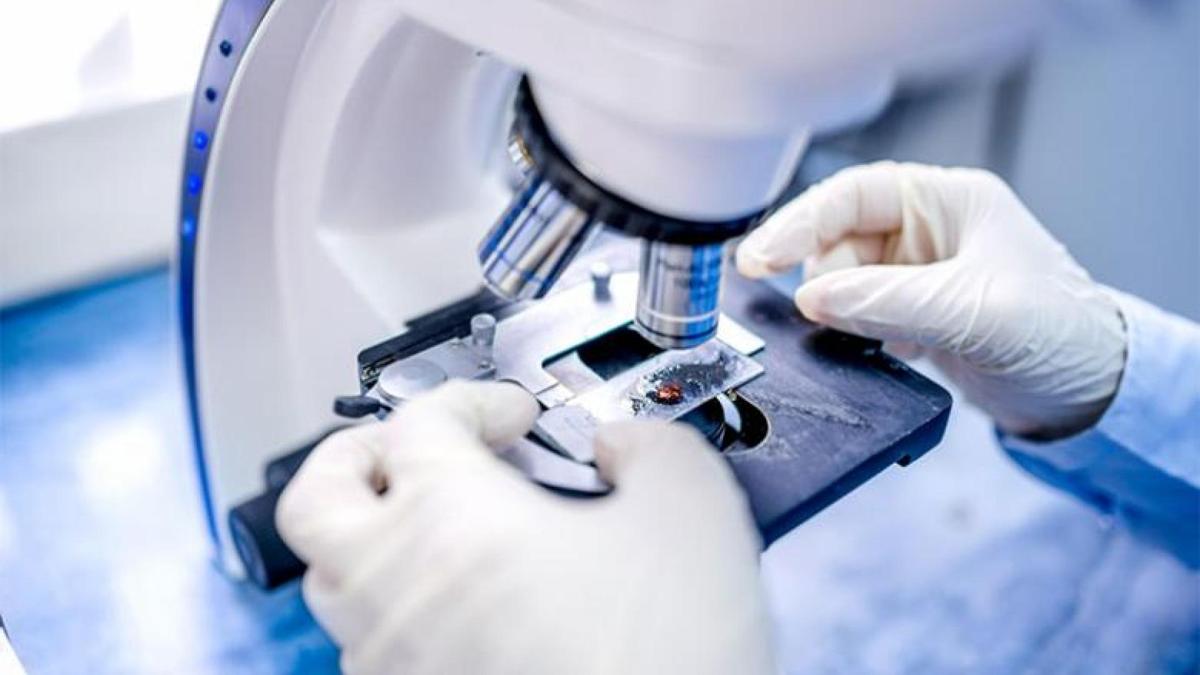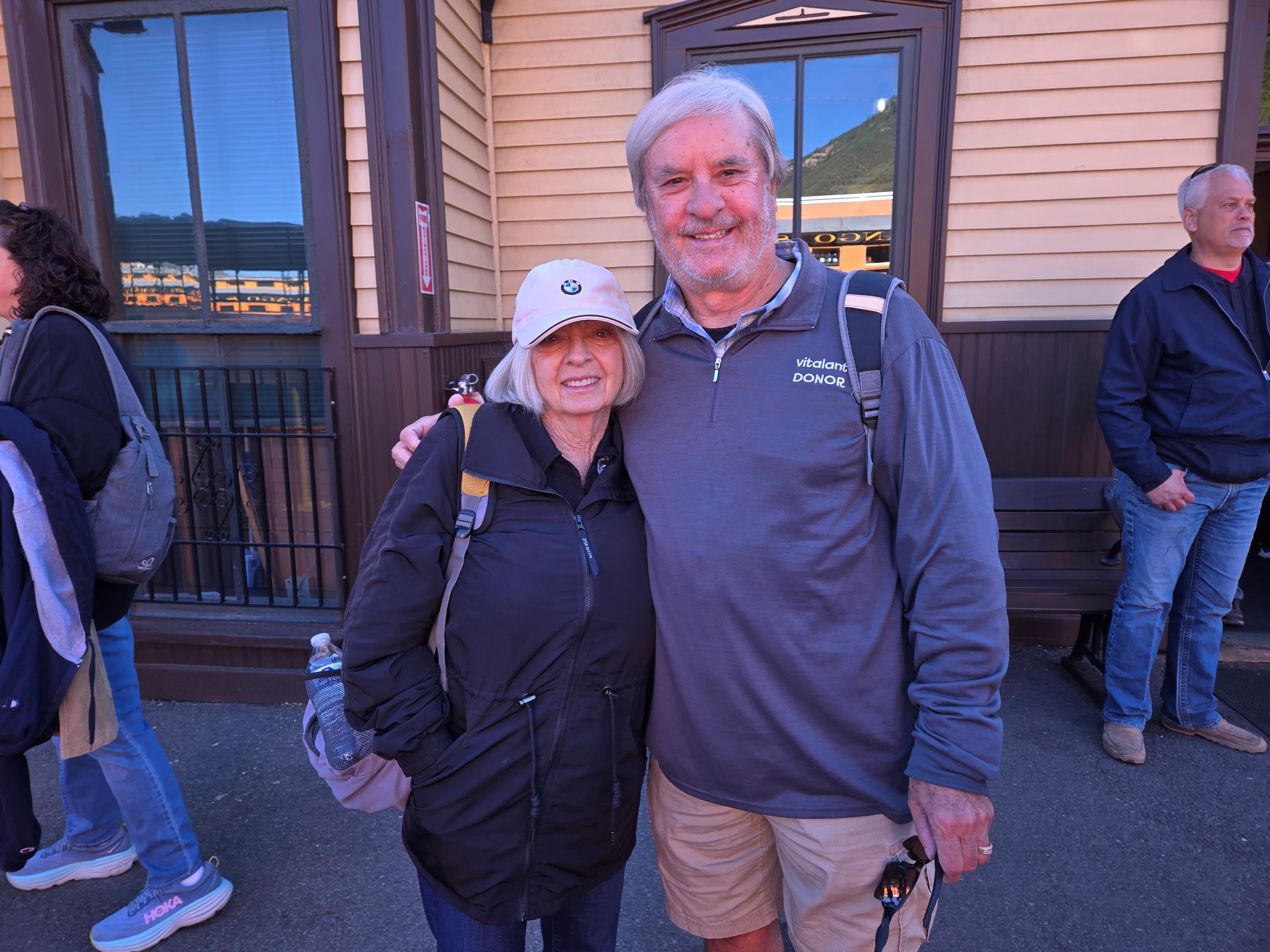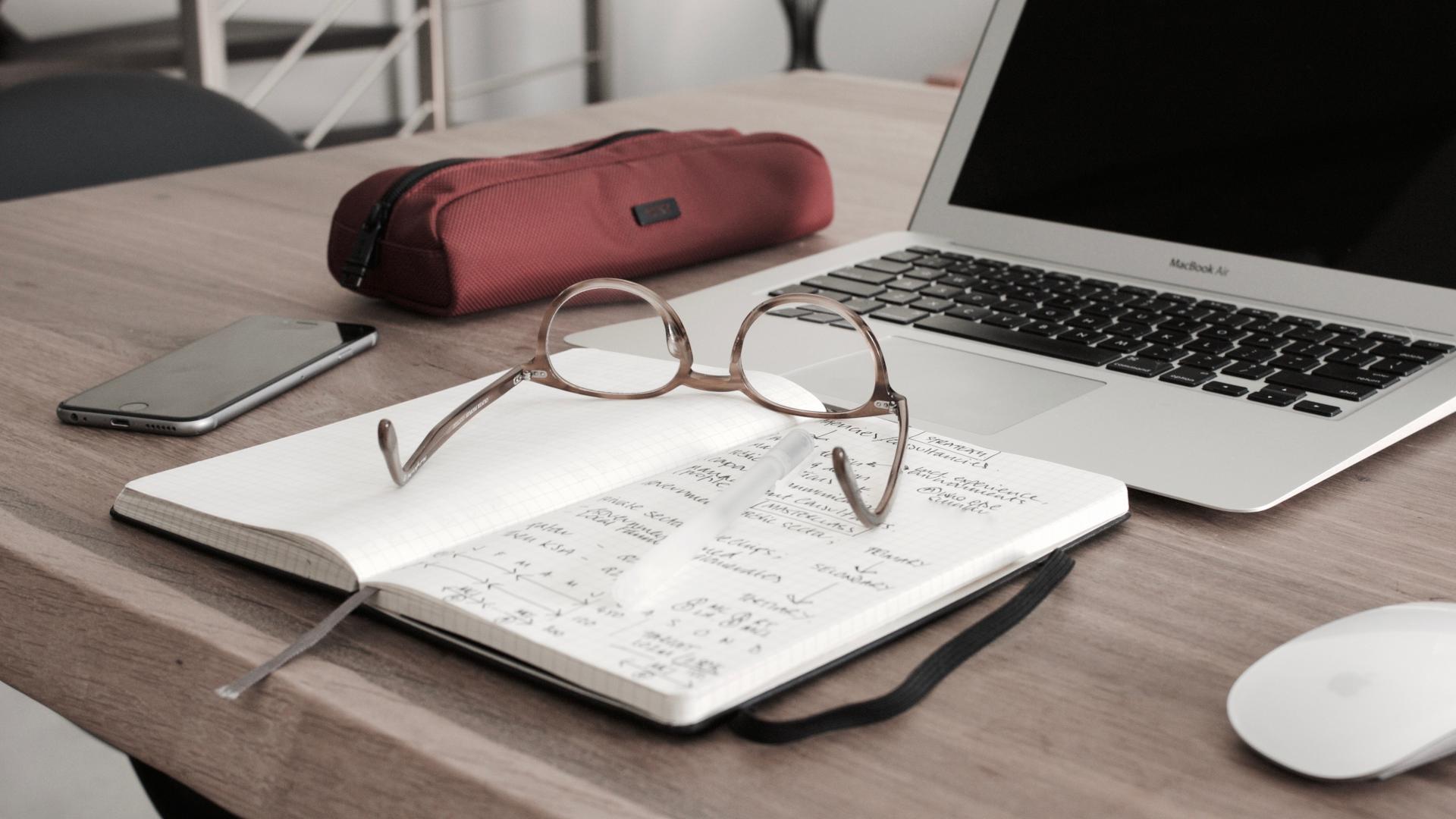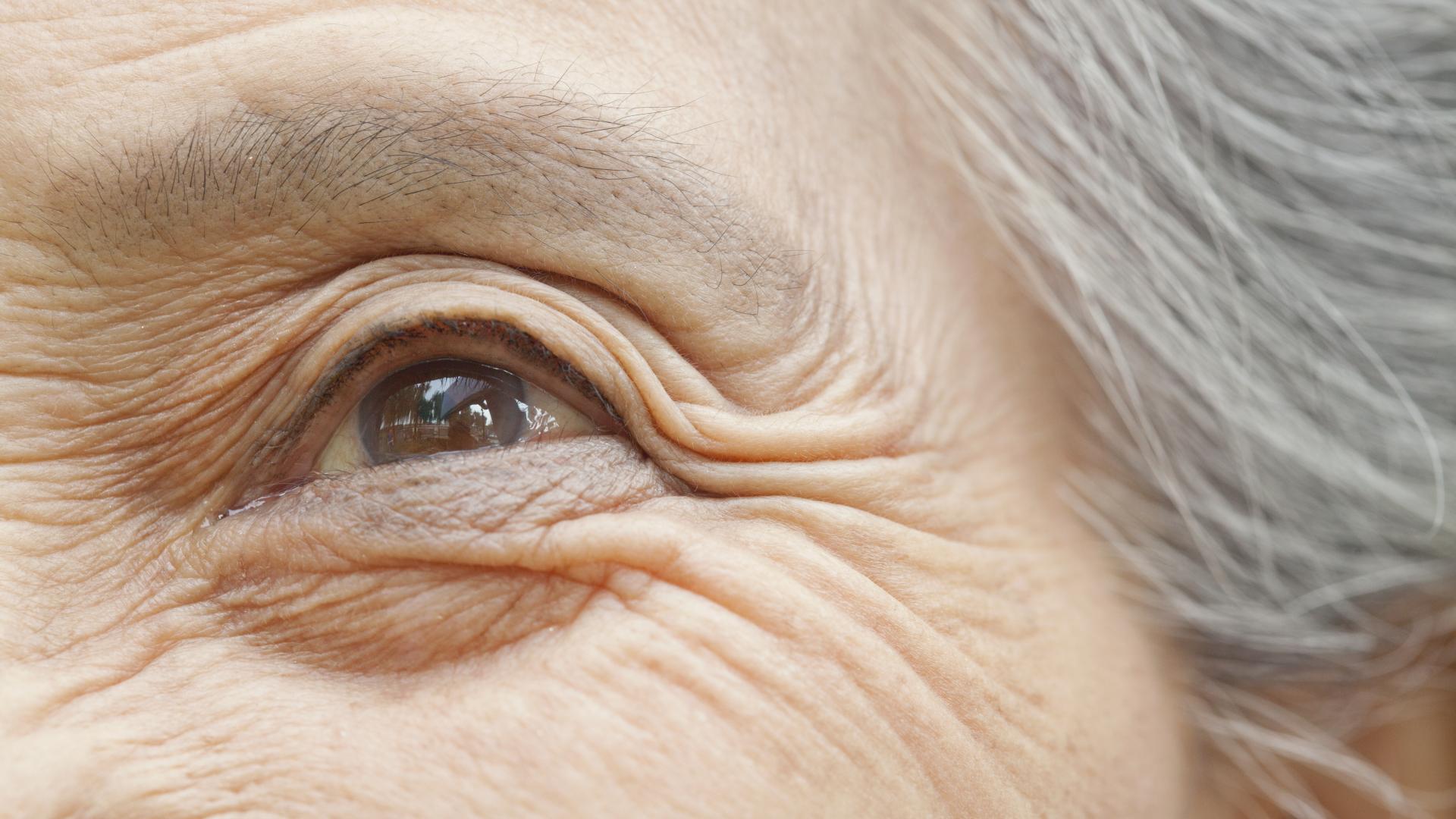How Low Vision Services Can Help You
Featuring
Ranjoo K. Prasad, O.D.
Specialist in low vision rehabilitation at Penn Medicine


Ranjoo K. Prasad, O.D.
Specialist in low vision rehabilitation at Penn Medicine

Ranjoo K. Prasad, O.D., a specialist in low vision rehabilitation at Penn Medicine, is the guest speaker.
Please note: This Chat has been edited for clarity and brevity.
MICHAEL BUCKLEY: Hello, I am Michael Buckley from BrightFocus Foundation. I want to welcome you to today’s BrightFocus Chat. Today’s Chat is “How Low-Vision Services Can Help You.”
If today is your first time on a BrightFocus Chat, welcome. Let me take a moment to tell you about BrightFocus and what we will do today. BrightFocus Foundation funds some of the top researchers in the world. We support scientists all around the globe that are trying to find cures for macular degeneration, glaucoma, and Alzheimer’s. We share the latest news and developments from these scientists with families who are impacted by these diseases. We have a number of free publications and plenty of materials on our website, www.BrightFocus.org, that offer tips for living with diseases such as macular degeneration. Today’s BrightFocus Chat is another way of sharing this information.
We are really fortunate to be joined today by someone who was on a Chat a little over a year ago. That is Dr. Ranjoo Prasad at the University of Pennsylvania in Philadelphia.
Dr. Prasad, thank you for coming back and joining us again. I wonder if we could start off with you telling us a little bit about your background.
DR. PRASAD: Yes, of course. Thank you so much for having me again. It is my pleasure to be here. Currently I am the director for the Penn Center for Low Vision Rehabilitation. It is part of the Scheie Eye Institute, which is in the Department of Ophthalmology at the University of Pennsylvania Health System. I actually have been working here for about 16 years. I have been the director for about 1 year. I have been here for a while and doing this for a long time.
MICHAEL BUCKLEY: That is great. Out of curiosity, how did you end up choosing this line of work?
DR. PRASAD: When I was a fourth-year optometry student, I had the opportunity to observe and work with another low-vision optometrist for a 3-month rotation. She was also a low-vision specialist. When I was working with her, I saw the magic she did with some of these patients who had vision loss and who had a lot of difficulties. I basically watched her improve their quality of life. I knew right then and there that that was what I wanted to do. She ended up being my mentor and my colleague. I have the utmost regard for her. Her name is Dr. Janice Steinberg. She was also the former director here.
MICHAEL BUCKLEY: Wow. I was really struck by your use of the word “magic” to describe it. It is really impressive.
Today we will be talking about how low-vision services can help you. Questions have already been submitted, and I think that is a great way to get started. Linda from Maryland was wondering if you could define low vision. Is there a specific number? 20/30? We hear the phrase “low vision” a lot, but I’m not sure folks know exactly what it means. Could you tell us a little bit about that?
DR. PRASAD: Yeah. I understand that. I have people ask me the same question: “Do I have low vision? What is low vision?” I basically define it as a reduction in visual function as a result of an eye disease, which cannot be corrected with surgery, medication, and/or conventional glasses or contacts. It is basically anyone who has been diagnosed with an eye condition, such as macular degeneration, glaucoma, diabetic retinopathy, or any of the hereditary eye diseases, among many others. They have a reduction in function because of their vision. I’ve seen many situations where people don’t have much vision loss—where their visual acuity is pretty good. For example, they can still drive, but they have problems with glare or with detail. Like I said, it is anybody who can’t do the things they used to do the way they would like to.
MICHAEL BUCKLEY: That’s interesting. It’s more of a description than a numeric thing. Dr. Prasad, what would you suggest could be the first step for someone who is hoping to make the most out of their remaining vision?
DR. PRASAD: The first step would be to let their doctors know. To tell them what their difficulties are. “I’m having problems reading. I’m having problems seeing faces.” Then the doctor or eye doctor will probably ask them a few more detailed questions and refer them to somebody who would be able to help with achieving their functional goals again. The first step is just to let somebody know—let your doctor know.
MICHAEL BUCKLEY: That sets up one area that I would like you to educate our audience about. To me, as a non-physician, there is an alphabet soup of specialties—LVT, CVRT—it seems like there are about four or five of them. Could you take a few moments to explain some of these acronyms or letters that patients might hear about but not completely understand? Want to start with an LVT?
DR. PRASAD: An LVT is a low-vision therapist. These are individuals who have pretty much a Master’s level of education. They evaluate an individual’s functional vision in relation to their vision disability. They are not what they call certified. They also have therapists that are certified through the Academy for Certification of Vision Rehabilitation and Education Professionals (ACVREP).
MICHAEL BUCKLEY: Great. Then there is a CVRT.
DR. PRASAD: A CVRT is a certified vision rehabilitation therapist. They also evaluate and train the visually impaired individuals in their home environment and work environment. These people are also involved in training people who are blind who have very, very low vision. That group of individuals has a special type of training in rehabilitation.
MICHAEL BUCKLEY: There are a few more I wanted to ask you about. CLVT?
DR. PRASAD: That is a certified low-vision therapist. These individuals are certified through the ACVREP. They’ve passed a written exam. They’ve submitted a certain number of course work hours and a certain amount of clinical training as well.
MICHAEL BUCKLEY: The next-to-last one in the alphabet soup here is OT.
DR. PRASAD: Occupational therapist. These are licensed providers who follow the medical model of rehabilitation. They perform full functional evaluations. They also need a script or a prescription from a licensed provider, such as your ophthalmologist, primary care doctor, or optometrist, and they basically use other means as well to address what your goals are. For example, they will look at your cognition and your motor ability, range of motion, sense of touch, etc.
MICHAEL BUCKLEY: Seems like that brings in a lot of the challenges that people might have. Lastly, what is a COMS?
DR. PRASAD: This is a certified orientation and mobility specialist. These individuals evaluate and train the person to determine their position in an environment and to navigate safely from point A to point B. For example, if someone has difficulty going up and down stairs and curbs, we would refer that patient to an orientation and mobility specialist to be evaluated and further trained. The specialists also train individuals with a cane if needed. They are also certified through the ACVREP.
MICHAEL BUCKLEY: Thank you. This has been really helpful. We already have a few questions I would like to turn to. Dr. Prasad, Carol from Ohio has a question about the loss of central vision that comes from macular degeneration. Is there a particular specialist that is best suited to help someone who loses central vision? She mentions it can make it hard to do specific tasks around the house. Do you have any general thoughts about someone who is starting to experience those challenges?
DR. PRASAD: With macular degeneration, as we know, it affects your central vision, which is your detailed vision. If you have one eye that is much worse than the other, individuals lose their ability to see depth. Their contrast sensitivity is also reduced.
The first step would be to get them to a low-vision specialist to see if they have the best prescription. Sometimes just making little tweaks to their glasses can be beneficial for them. Then see if there is a special aid or device that can help.
The next step after that would be a referral for rehabilitation, whether it be to an occupational therapist or a low-vision therapist, to help train them better with any devices that are prescribed. Or they could also use adaptive techniques and environmental adaptations that could help.
One thing that also can happen with the loss of depth perception is your ability to do certain tasks, such as hammer a nail or paint your fingernails—things like that. A rehabilitation specialist can help you achieve those goals.
MICHAEL BUCKLEY: Very helpful. Judy from Pennsylvania has a question. She is wondering why it is that sometimes glasses won’t make your vision better if your vision is worsening. For a lot of people, that seems to be the point of glasses—to make your vision better. I was wondering if you could elaborate on that point.
DR. PRASAD: Yes, and that is a very common perception that people have. They think that just because their vision is getting worse, that they can change their glasses and their vision will get better. That is not always the case. Remember that with macular degeneration, glaucoma, diabetic retinopathy—the problems are with the ocular health. For macular degeneration, for example, you lose your central vision. No matter how much we change the lenses in front of your eye, if your retinas are not the same way as they used to be, it is not going to improve your vision. The example that I always give is a camera. Way back in the day, you will remember film.
MICHAEL BUCKLEY: In the 1900s, yeah!
DR. PRASAD: Yeah! I always use film because—let’s say for example the retina is like the film on a camera—if you have film that has a thumbprint on it or a spot on it, no matter how much you change the lenses in the front, it is not going to affect the image.
MICHAEL BUCKLEY: I appreciate that. It is a great way to describe that.
We have two callers who asked very similar questions about lighting around the house. One listener is saying that her eyesight is dimmer than it used to be—how can she make things brighter? Another caller wonders if there is special lighting that can help with geographic atrophy. I’m assuming those are similar questions to bunch together there.
DR. PRASAD: Yes. There is a lot of science behind lighting. It depends on the color temperature of the light, which I’m not going to get into, but that matters. What I mean by that is—is it a cool light like a fluorescent light? Or is it a warm light, like the old incandescent lights? How bright is it? How is it positioned? Is it diffused or direct? All of that matters.
Now, is one better than the other? It all depends on what you do. For example, someone with geographic atrophy, if they are doing near tasks, they would do better with the direct light focused right on their paper. But that may not be the case if you are in the house, for example. It is also very, very subjective too. There are therapists out there who do specific lighting evaluations, specific to the task being performed and the environment as well.
MICHAEL BUCKLEY: That is really interesting. Another question—I know you are a doctor and not a tax expert, but we had one person call in wondering, “How does one get labeled or declared as legally blind for tax purposes?” Certainly, if this question is not in your wheelhouse, we can move on, but I just wanted to throw it out there.
DR. PRASAD: Yeah, that is actually a very easy question to answer. There is one legal definition of blindness. That is 2200 visual acuity in the better-seeing eye or less than a 20 degree visual field in the better-seeing eye. All you need to do is get a letter from your eye doctor stating that you are legally blind, and that will certify you.
MICHAEL BUCKLEY: I appreciate that. That is a very helpful point. A few more questions have come in. We have a question about cataracts. Do cataracts make low vision worse, particularly if you have macular degeneration?
DR. PRASAD: Yes, because it limits the amount of light and the quality of light that comes in. It can affect your vision, but you would have to check with your eye doctor or at your eye exam to determine at what level they think the cataract is affecting the vision more than the macular degeneration.
MICHAEL BUCKLEY: Thank you. A couple of questions about special glasses. Alfred from Oklahoma is wondering what type of specialist gives out special glasses. We also have a caller from New York who heard that sometimes glasses like that can make people a little nauseous. Could you elaborate a little bit about specialized glasses for low vision?
DR. PRASAD: A low-vision optometrist would have those specialized glasses. Again, it depends on what it is. Is it for reading? Is it for distance? Specialized glasses for distance could be a bioptic telescope. For reading it could be a high-powered reading microscope or a prismatic glass or a telemicroscope. A low-vision optometrist should have those. The best thing to do if you are interested in them is to contact them directly to see if they have what they think you need. Otherwise you can schedule an appointment for them to determine that. The other question was about getting nauseous?
MICHAEL BUCKLEY: Yeah, someone from New York heard that sometimes glasses like that can make people a little nauseous.
DR. PRASAD: That is true, because they are high-powered lenses. Some people adapt differently to it. One of the things that happen when you make things bigger, which is a lot of what these glasses do—they magnify—so reading glasses for up close make things bigger. Telescopic glasses for distance—not only do they make things bigger but they bring it closer. So what happens with these higher powers is that it is very prone to movement. The stronger the power, the more your head moves, the more nauseous you feel because of that movement.
MICHAEL BUCKLEY: That’s interesting. Is that something that—if a person communicated that to their specialist, would there be some alternatives around that? Is there an acclimation process?
DR. PRASAD: Both. There is an acclimation process, and then there are also different devices with different optics. It all depends on what the patient’s goals are and what devices we have that are available. We could work around it too. Sometimes what I find is that if the higher-powered or stronger glasses make them more nauseous, then sometimes just reducing the power a little bit or making the print bigger—that is another thing we can do.
MICHAEL BUCKLEY: A few minutes ago you were really helpful in delineating the different types of specialists. I have a few questions about seeing a specialist. Does one need a referral usually to see a specialist in the categories you mentioned earlier?
DR. PRASAD: Typically, yes. For example, if you are seeing an occupational therapist, they need a referral or a prescription from a licensed provider. Typically, most rehabilitation settings or hospitals have occupational therapists there, but the one thing that is a little challenging is that there are not as many occupational therapists that specialize in low-vision rehabilitation. The key is trying to find that one specialized OT. Regarding all of the other therapists, the CVRTs, LVTs, etc., they typically work with the state agencies, or with schools, or with the Veteran’s Administration hospitals as well. For example, if I feel that one of my patients needs a low-vision therapist or a rehab teacher at the home environment, I will take the step to refer them to a state agency or a local agency. Then they will assign them a case worker. From there, they get assigned a rehabilitation specialist.
MICHAEL BUCKLEY: Related to that, I was wondering if, broadly speaking, you could address what tends to be covered by private insurance and also Medicare and Medicaid. Is there a distinction if one is legally blind or not? Could you address the broad topic of how someone can pay for this?
DR. PRASAD: Okay. The low-vision evaluations are typically covered by Medicare and Medicaid—the insurances—because the optometrists should be billing in a certain way. However, you have to make sure that the provider you are going to is on the panel of your insurance. A visit to an occupational therapist also depends on the insurance as well. Medicare clearly covers that. Therapists, rehabilitation teachers, or the LVTs—those are not covered by insurance because they are not licensed providers. However, if you go to them through the state, then the state usually covers it. The devices, on the other hand, are not covered by insurances. They can be covered by the state agencies or vocational rehabilitation agencies through the state.
MICHAEL BUCKLEY: I appreciate that. That is helpful. I know there are a lot of distinctions we need for folks. Out of curiosity, in your practice and with the patients you see, is there a common or most frequent way that you feel your patients’ daily lives are improved? What is the area where you think that low-vision services can best make an impact?
DR. PRASAD: With the patient’s quality of life, I find that one of the most important goals for them is reading. I feel that if I could just help them read again, give them what they love to read again, then I have accomplished my goal.
MICHAEL BUCKLEY: That is amazing.
DR. PRASAD: I say reading and also—the one thing I failed to mention earlier—is that these individuals, at the time of their diagnosis of an eye condition, there is this level of grief that they experience too. There is going to be a process that they may lose their vision. If I can help them improve their quality of life, and thus help them with their adjustment and their grieving process, that is great.
MICHAEL BUCKLEY: That is fantastic. We have seen a lot of the research that BrightFocus has funded, whether it is in vision disease or Alzheimer’s—just the importance of intellectual and social activity and stimulation. I think that what you’re talking about really seems like it can make a big difference. On that same topic of quality of life and independence, can you talk for a minute about driving? My hunch is that it might be a difficult topic—whether it’s in your clinic or in peoples’ homes. Could you comment on that?
DR. PRASAD: Yeah, it’s an extremely difficult topic for the individual, but a very, very important one. Very important. The one thing that is important to remember is that every state has a legal requirement. Some states are stricter than others. In some states you can drive with a low-vision device, and in others you cannot. We always have to address whether or not they meet the legal requirements. If they do not, then a discussion follows about not driving.
MICHAEL BUCKLEY: Any tips for family members that have to address this issue in some fashion?
DR. PRASAD: What I try to tell the family members is, first, be versed in the legal requirements. Be very open with their loved ones but not to be critical of them. Then bring it up to the provider or their doctors. Go with them to one of the appointments and voice your concerns. What I try to reiterate to the patient and explain in great detail is that first and foremost, I am not taking their license away. I am just relaying the information regarding the legal requirements. Second of all, I try to focus the concern on them. That there is a lot for them to lose if they are in a position that they shouldn’t be in.
MICHAEL BUCKLEY: That is a great point. Related to reading and driving, when you come across patients that are still interested or need to stay in the workforce, are there any tips for how someone should address that with their employer? That could be awkward.
DR. PRASAD: Yes, it is a very difficult one for some. The most important thing to remember for these individuals is that they do fall under the Americans with Disabilities Act, so they cannot be discriminated against. The best thing to do is, when they are ready to discuss it, talk to their direct manager.
MICHAEL BUCKLEY: Any tips for how they should have that conversation?
DR. PRASAD: I think pulling them aside one day and explaining what the difficulties are and being open about their eye condition. The other thing is—I’ve had that conversation quite a bit with many patients as well too. I know a lot of individuals have a fear of losing their job—there are a lot of fears there. There is a national agency called the Disability Rights Legal Center. They have pro-bono attorneys that work for them who provide free legal advice on how to address certain issues like that. For example, a lot of my patients, when they bring it up to me, still fear the legal consequences. I’m not an attorney, so I will refer them to the Disability Rights Legal Center so that they have a better source.
MICHAEL BUCKLEY: Obviously workplaces vary a lot. Are there common accommodations that could be made?
DR. PRASAD: Oh, absolutely. One of the simplest ones is, for people who are on the computer a lot, getting a bigger monitor and just increasing the font size. That is a very simple one, and that is one where people around them won’t have to know. Lighting also makes a big difference. Getting a bigger light. Also, if they are dealing with print, if they have print or paper that is hard to read or too small to read, putting it on a copier, you can make it bigger. We also have magnifiers. You could use a simple magnifier to make things a little bit bigger.
MICHAEL BUCKLEY: That is good to know. It is good to hear that a topic that can be difficult for everybody involved seems, from the way you describe it, to have some very attainable, manageable, types of options. Related to what you talked about an employer can do, when you look at folks who need low-vision services, what is the best role that a family member can play to be helpful and supportive?
DR. PRASAD: Be there, be open, and don’t be critical. Just be a listener too. I see a lot of different dynamics that come into the office. What I find is that for some who want to be independent but the family member is hovering—the individual wants to be independent. I think the best thing is to meet in the middle and be in a supportive role. But, then again, you have the flip side of it, where some family members have a harder time coping with their loved ones’ vision loss because they end up having the primary caregiver role too.
MICHAEL BUCKLEY: Yeah. That can be very challenging. In a prior conversation, I understand that you now have or help lead a support group. Could you tell us a little bit about what your group does and what that experience is like for you as a professional—to start a group like that?
DR. PRASAD: It has actually been wonderful! We started it back in January, so it has been running about 8 months now. It came up because one of our patients just felt isolated. He basically wanted to know if there were support groups available so he could talk to people who are in a similar boat. Fortunately for me, I had a social work intern that was working with me. Her father has macular degeneration and glaucoma. When she was working with me, this all came about, and I said, “Do you want to help me put this together?” and she said, “Absolutely.” She and this other social worker are leading it. We got very fortunate because one of the things with a support group is that you want to have the right moderator to help direct it. It has been great. We have about 25 to 30 registered members. We have people from all different backgrounds.
One of the things that I’ve found is that there is no real evidence on the best way to start a support group. We had used other models from other conditions, like cancer support groups, to help us establish ours. It’s been very successful. As I said, we have people from all different backgrounds and all different diseases, ages—I think our oldest is 87 and our youngest is 20. They’ve really connected with each other as well.
MICHAEL BUCKLEY: Wow. That is great. It must be a wonderful experience. Turning to another question that we got—it has to do with the computer. We have a question from Pennsylvania. “Can a low-vision therapist help me with special lighting for the computer?” Dr. Prasad, I know you mentioned earlier about screens and fonts, but are there other things that could help with computers or reading print materials as well?
DR. PRASAD: The question about the lighting and the computer—now that monitors have become much better than before—so there are the LCD and flat screens, they are much easier on the eyes, but you could also use certain types of filters that you could put over the computer. You could adjust the lighting internally as well. That is something that a therapist can help with too. Someone who specializes in technology assessments can work with you on that. Also, with an employer there is usually an IT department too who can also help with that.
MICHAEL BUCKLEY: Someone looking at a screen, like a desktop or laptop computer, or watching television—does it make a difference if that room is on the brighter side or the dimmer side? Does that have any impact on someone with low vision?
DR. PRASAD: It can. Yes. For example, people with certain eye conditions such as glaucoma or diabetic retinopathy where they have had the laser treatments, they are very sensitive to glare or excessive light. They wouldn’t want it that bright, but someone with macular degeneration is on the other end where they would prefer more light. So it varies based on the patient.
MICHAEL BUCKLEY: Is that something a low-vision specialist could help customize depending on the person’s situation?
DR. PRASAD: Absolutely, because it is very subjective. There is a lot of theory and science behind it, but in the end it is very subjective.
MICHAEL BUCKLEY: Yeah, and probably like most households where people fight over the thermostat or too many lights on—I don’t think that’s just my house—that’s probably everywhere! Another question we got is, “how does one go about finding either a low-vision specialist or an ophthalmologist in their area?” Are there any common resources that could help?
DR. PRASAD: The two main resources for low-vision specialists and low-vision optometrists are the American Optometric Association—which has a lot of lists—and you can also contact the state agencies. They would have a list of low-vision specialists. And with ophthalmologists, there is also the American Academy of Ophthalmology. That is a great resource for Academy members. Also contacting your local and state agencies.
MICHAEL BUCKLEY: We also have similar information at www.BrightFocus.org with links that can take you to those places. I think it is really helpful. I just want to do a couple of housekeeping items, Dr. Prasad, and turn to some final closing remarks. To our listeners, to help us shape the topics for future Chats, we will do a one-question survey.
Dr. Prasad, I want to wrap up today. You said you’ve been doing this for a number of years. Do you have any recurring themes or messages that you like to give to your patients? Is there a common misconception that you often try to rebut? Any big-picture advice you try to impart to your patients?
DR. PRASAD: I always tell them, don’t lose hope and don’t give up. I get patients who—rightly so—are frustrated and grieving and depressed. They are upset. There is hope out there when it comes to helping you become more functional. We can help you. That is our field. We can’t bring back the vision that you’ve lost—that the patient has lost—but we can use what you have and make it better or more useful for you. The key is to keep your hopes up and try to be motivated and let us help you.
MICHAEL BUCKLEY: That is wonderful. I think, on that very inspirational note, I would like to conclude the conversation. Dr. Prasad, thank you so much for joining us today. I am very confident that our listeners found a number of your points very helpful in their daily lives and in their families’ lives.
On behalf of everyone at BrightFocus, Dr. Prasad, thank you very much for being a part of this. To our listeners, thank you for joining us. This concludes today’s BrightFocus Chat.
BrightFocus Foundation is a premier global nonprofit funder of research to defeat Alzheimer’s, macular degeneration, and glaucoma. Since its inception more than 50 years ago, BrightFocus and its flagship research programs—Alzheimer’s Disease Research, Macular Degeneration Research, and National Glaucoma Research—has awarded more than $300 million in research grants to scientists around the world, catalyzing thousands of scientific breakthroughs, life-enhancing treatments, and diagnostic tools. We also share the latest research findings, expert information, and resources to empower the millions impacted by these devastating diseases. Learn more at brightfocus.org.
Disclaimer: The information provided here is a public service of BrightFocus Foundation and is not intended to constitute medical advice. Please consult your physician for personalized medical, dietary, and/or exercise advice. Any medications or supplements should only be taken under medical supervision. BrightFocus Foundation does not endorse any medical products or therapies.

In recognition of National Caregivers Month, this episode explores the vital role of those who support individuals living with vision loss—whether family members, professionals, or volunteers.

Dr. Jeffrey Stern and Dr. Sally Temple, Principal Investigators and Co-Founders of the Neural Stem Cell Institute, will explain what stem cells are and share the latest updates from clinical trials.

Dave and Leanna Palmer share their commitment to supporting Macular Degeneration Research.

Resources and information that provide products, services, and other support for people with macular degeneration and their families.

Join Dr. Sara Fard, a retina specialist at Illinois Retina Associates, as she explains the benefits of sustained GA treatment, including slowing the rate of vision loss, protecting retinal tissue, and supporting daily visual function.
Help Fight Macular Degeneration and Save Sight
Your donation helps fund critical research to bring us closer to a cure for this sight-stealing disease and provide vital information to the public.
Donate Today